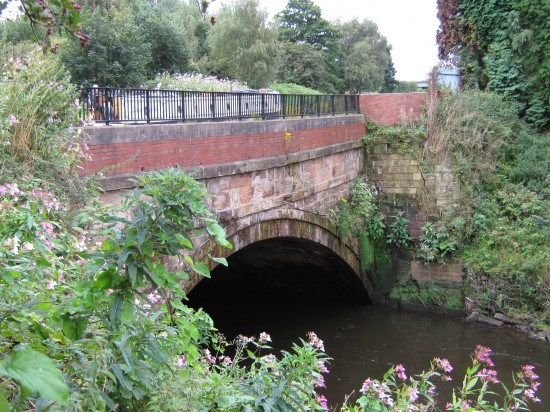by Charlotte Starkey.

The Liverpool Mersey tells stories of fortunes made and lost, but there are less well known inland narratives of a river which historically divided the North from the Midlands, was appropriated by Manchester’s Ship Canal, then most recently clumsily ignored as a natural border when the mongrel ‘Greater Manchester’ was created. With myriad sources in the complex Pennine rock geology, where Benny Rothman campaigned for walkers’ rights in 1932, somewhere around the Cat and Fiddle many dribbles come together, divide, chatter around rocks, down gulleys, to be joined by others obscuring a source as elusive as creation itself, as indefinable as where this river ends. Like all rivers, this one really defines features of the hills from which it falls until it reaches the plains of babbling constituencies. It is never static, never the same river, the landscape changing with the force of flowing water. Jackson’s Boat Inn was once on the other bank.
The reaches from south of Stockport to Carrington, notorious flood fields, mark one of the great green belts of Manchester. The flood danger protects it from planners for only the foohardy would attempt a planning raid here (and some tried). A haven for Canada geese, swans, wading fowl, ducks, football, mini-motos (the kind that whine through dreams), dog walks. You glimpse it alongside a stretch of the Manchester outer ring road. After the Second World War the flat land on either bank of the Mersey between Sale and Stretford was a tip for Manchester. The banks rose up, the river fell back into a deep crevasse made of muck. Methane gas was burnt off the site. Children, before entrapment by commercialised cyberspace, told elaborated tales, as their grandparents had done before them, of dangerous whirlpools: altered pressure on the water’s surface fought the natural flow as the river banks grew, sloping outward and upward, canalising the river.
Dangerous. Few ducks stay here.
Before the Mersey becomes the Manchester Ship Canal at Flixton, it meets a much older canal – the Bridgewater, carried over the Mersey by Barfoot Bridge, an aqueduct, next to Mosley Acre Farm just beyond Dane Road, Sale, on the towpath. You find the spot by the animal sanctuary that the farm now is. Semi-circling round the abandoned domestic animals, themselves with personalities as inscrutable as the mood of the river itself sometimes, finding sanctuary before rehoming, the river passes underneath the canal of the Duke of Bridgewater.
No one would imagine. A calm summer day after a week of sunshine: the river, deep beneath the bridge, chattering en route to Liverpool. A
companion dog along the towpath of the canal, pass the anglers, look down onthe river over the parapet of Barfoot Bridge, walk on. Come tomorrow, after a day of heavy rain on the Peaks or on the plain where the feeders – from Saddleworth the Tame, from the Peaks the Goyt and Etherow – flow, then, oh then! this river is the monster of its folk tales. On a bike at Northenden, where the motorway crosses Palatine Road, itself passing by road bridge over the Mersey. Late Autumn, evening, very dark. Thick oily bobbing, lights near the bridge. A deep, thunderous rushing bass. ‘Get off that bridge – NOW!’, someone shrieked. I turned – There! the familiar trickle of yesterday twenty feet below the bridge, now inches away, roaring with a terrible percussive suction underneath my feet towards whatever it could snatch and carry with it. A seismic shift from melodic reminiscing about messing about on water, this was demonic improvisation. I felt an exhilarating pounding fear within me. Then a few months ago, on the canal bridge over the river, walking with Leo who was in a bad mood. I heard that sluicing rush after days of heavy rain. The primeval energy of a torrent (Turner knew it)- the river uncontrollable, now menacing Barfoot Bridge. It crashed against the stonework supports – older ominous cracks testified to earlier damage – smashed on either bank and crazily careered onwards. Two engineers on the bridge some days’ later:
‘You should have been here the other day,’ I said.
‘Y’on the bridge then?‘
‘Not for long …‘
They nodded. ‘D’ y’ feel the bridge shake?‘
Did the bridge shake? What a place to carry a canal! Think: the Manchester Industrial Revolution hung on the tenacity of a wobbly bridge and an unpredictable amazing river. History hangs on crazy fortune. The danger is the vacuum: the water dives under the bridge. It will suction anything as it pulls away the other side.